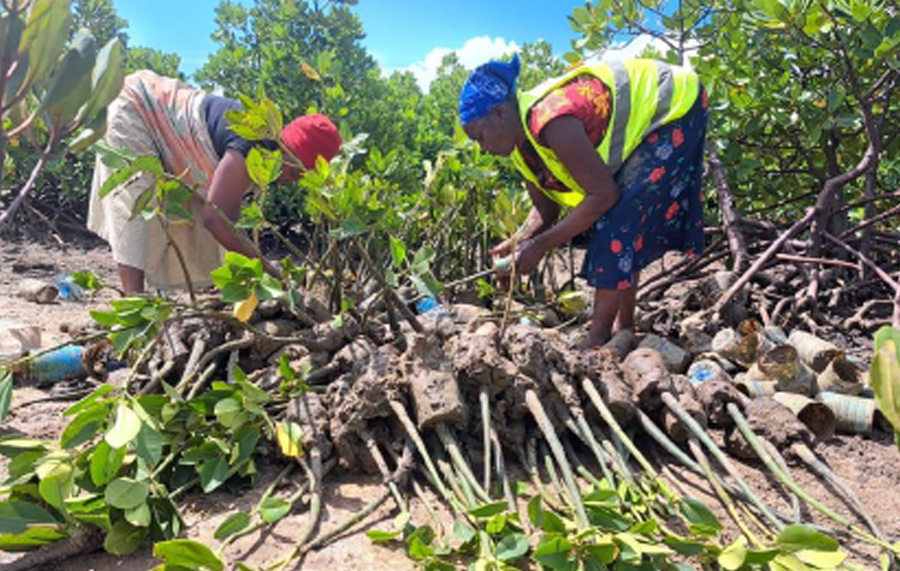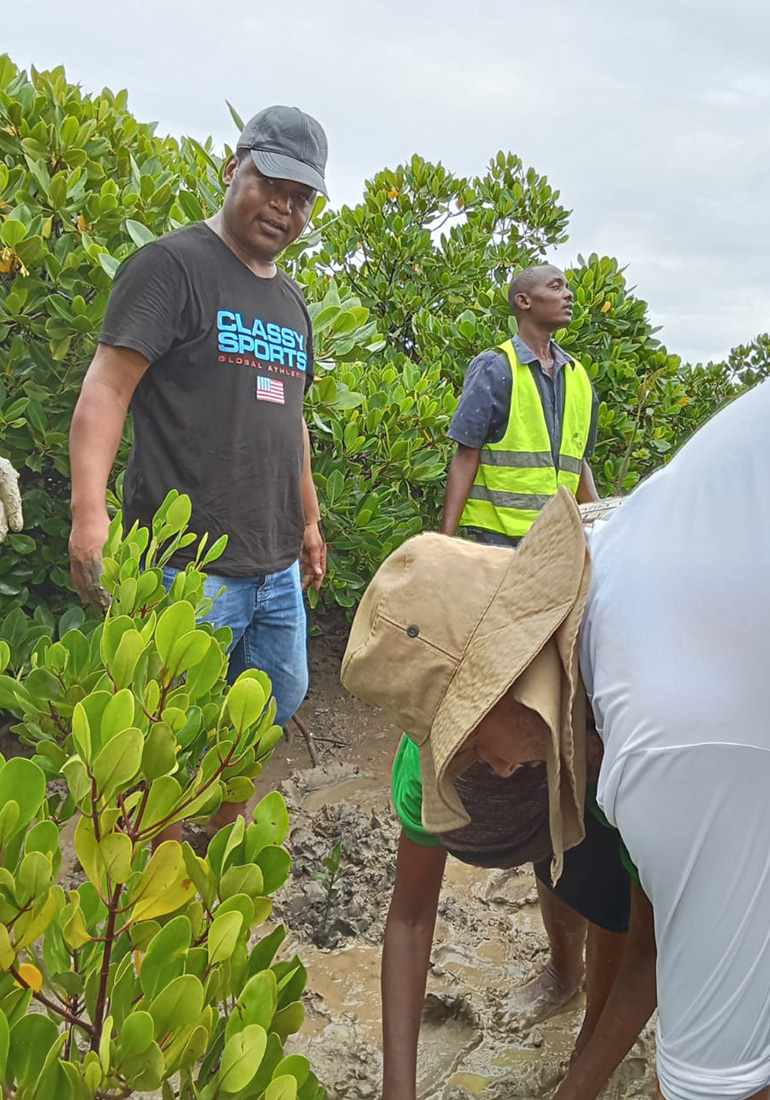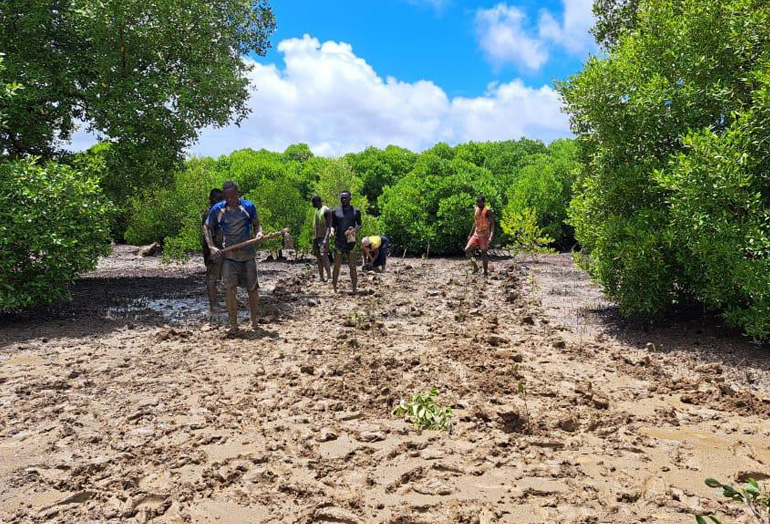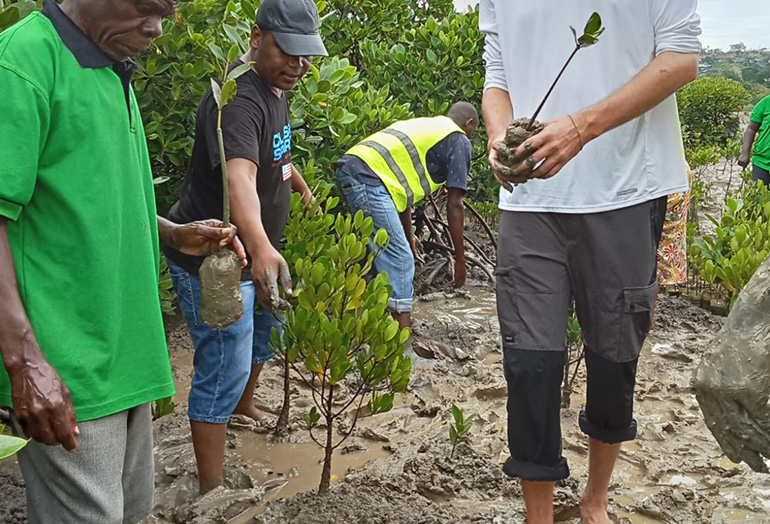Planting-Potted Seedlings
With a proposed budget of Kshs 100 per tree for 5.5 million mangroves within a three years’ period, all-inclusive of Procurement, Transportation, Planting and after-care of the
propagule/planted seedlings. The planting will be preceded by a detailed Mapping/Assessment guided by the KFS technical standards implemented by their technical staff and CarboDeep team with a view of ensuring we plant the right
species in the right places. For instance, in some highly degraded areas, the rehabilitation will mean planting/reforesting the whole segment. Other segments will entail enrichment planting just to fill in gaps. There are other areas whereby no planting will be needed and perhaps hydrological rehabilitation to remove marine channels blockage by de-siltation would be recommended.
Protection
This would entail the conservation aspect. Protection of existing already mature and healthy Mangroves from grazing, cutting/logging, siltation, etc. It will involve training of community scouts to conserve the already healthy Mangroves as well as the growing ones. These community rangers may use tools like motor boats and bikes. We may also invest in
infrastructure like community Resource Centres. Upon the request by the KFS, we are also looking at supporting this work with aerial survey from a tool developed by the WRI, Virginia University in collaboration with NASA that it has access to that gives a near real-time alert of any conversion danger to the covered Mangroves. Other aspects of protection may include
provision of computers and smartphones as well as training (both backend and front end) about the monitoring tool. Monitoring of Recoveries in areas that are somewhat degraded but have shown ability to regenerate themselves if areas are protected is included in this intervention.
Livelihoods
These entails, beekeeping, boardwalks for ecotourism, crab fattening, sustainable shrimp & Octopus farming, etc. The KFS will facilitate connection between Avatari Development and the various respective CFAS and CBOS spread across the various sites in that regard.
It is expected that upon completion of the detailed Mapping exercise in all the necessary sites, CarboDeep would write again to the KFS to request for the drawing of a Professional Collaborative Framework and a Blue Carbon Development Project as would be informed by the feasibility report resulting from the detailed Mapping cum Assessment work. The respective County Forest Conservators and Forest Station Managers will be Implementing Partners.
Further, to prevent people in the community who live near the mangrove forest from depending on the deforestation of the mangroves for
charcoal or wood production to generate income for their livelihoods, CarboDeep plans to share 50% of carbon revenues with local stakeholders. By involving them in the entire planting process and continuing to share profits over the next 20 years, it is aimed to create a sense of ownership and awareness for the mangrove forest so that logging or use for agricultural purposes is not pursued.
Finally Avatari Development Kenya, which as one of the Partners sourcing requisite finances, they are investing in a USD 20 million Synthetic Bio-Mimicry Mangroves Research Lab in collaboration with the KFS in Mombasa to create meaningful and sustainable jobs to research institutions in the country besides facilitating advanced technology transfer.




